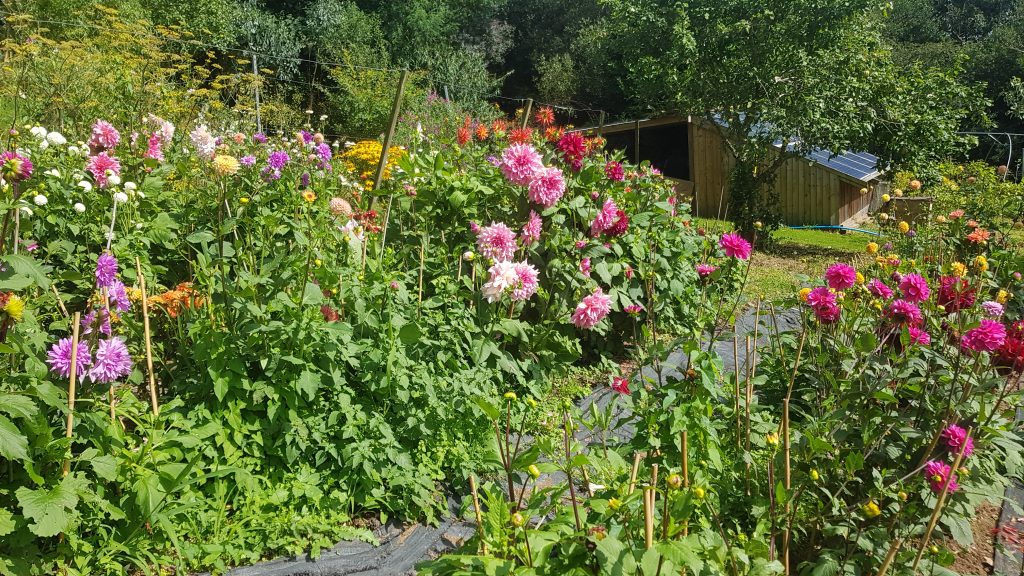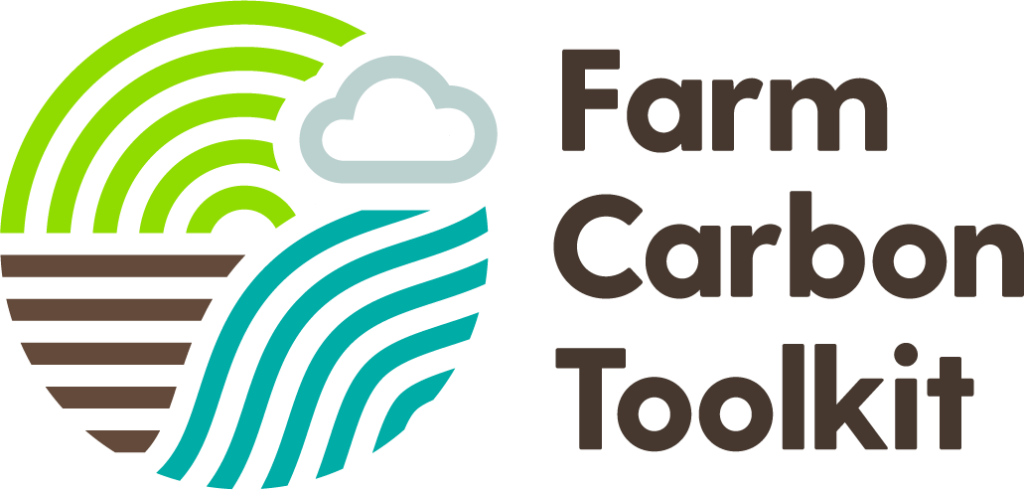
This is the second full year of a Carbon audit of production and activities at Brookside flower farm. Using the Farm Carbon Calculator as a basis of this sustainability report and accepted industry norm for UK farming practices.
Building on our carbon positive 1.95 tonnes/CO2 sequestered in 2023-24. This year we have improved on this with a carbon positive 3.80 tonnes/CO2 sequestered in 2024-25.
What we have done and what we are doing
Fossil fuels
Main usage is for production and delivery. Our single fairly modern diesel Peugeot van is use for deliveries and other business activities. Additionally, some older garden equipment still uses petrol such as lawn mowers and tractors.
Transition to Electric farm equipment.
Grass strimmers, pruning saws and chainsaws have now been replaced with battery rechargeable equivalents, eliminating 2 stroke powered tools from everyday maintenance.
Closed cycle of flower production
With cut flower production where only the flower is harvested, and the rest of the plant is discarded. We target a conservative 80% of products are now collected after the event. Used flowers and foliage, that are not kept (such as wedding bouquets and some arrangements) are returned to the farm and composted. Specialist foliage is also produced and treated the same a flowers. Choosing perennial planting such as small trees and shrubs for foliage further improve the sustainability and lowers the carbon intensity of production.
Solar power
An additional 2KW of solar panels have increased total solar output to 3.12MWh with 2.23MWh exported to Octopus, our renewable energy supplier, who buy our surplus energy.
Heating
We are mostly self-sufficient in wood-based heating for the barn but do buy in ‘Eco logs’ made from waste saw dust to cover any shortfall. Cornwall has a mild climate, and we don’t need to heat any of the green houses. We have some heated beds to start seedling in the late winter period, this is more than covered by our solar production.
Plastics and packaging
In production we no longer use any single use or ‘biodegradable’ plastics. Plastics such as trays, flowerpots and even polytunnel covers are now recyclable thru either local schemes or specialised companies. We expect flowerpots to last more than ten years and many of them were second hand from 2010 Chelsea flower show!
As a florist we have never used single use plastic or so-called biodegradable floral foams. Preferring to use traditional wire and moss for installations, Recycled paper and card are used for gift wrapping and packaging.
Improving our soils
We focus on practices that increase organic matter, reduce soil disturbance, and promote plant growth, such as cover cropping, no dig farming, and adding organic amendments.
1. Increase Soil Organic Matter:
Applying compost, manure, or other organic materials increases the amount of organic matter in the soil. Additionally, leaving crop residues (stubble, roots) on the beds to decompose and add organic matter to the soil.
2. Reduce Soil Disturbance:
Minimize or eliminate tillage (digging or rotavating) to reduce soil disturbance and maintain soil structure, which helps to retain carbon. Typically, this is done for new areas that are weeded out by lightly digging and removing roots of perennial weeds. Adding wood chip and compost, further sequestering Carbon into the soil.
No-Dig Farming allows for a more stable soil structure and increased carbon storage. Adding a top dressing of compost annually ensures adequate nutrient availability for plants to promote healthy growth.
The Carbon Balance
- Total Emissions: 1.43 tonnes CO2e per year
- Total Offsets: -5.22 tonnes CO2e per year
- Net Carbon Balance: -3.80 tonnes CO2e per year
Emissions Breakdown:
- Fuels: 1.15 tonnes CO2e (80.84%)
- Materials: 0.10 tonnes CO2e (6.98%)
- Crops: 0.14 tonnes CO2e (9.81%)
- Inputs: 0.01 tonnes CO2e (0.79%)
- Waste Disposal: 0.01 tonnes CO2e (0.60%)
- Processing: 0.01 tonnes CO2e (0.98%)
Offsets Breakdown:
- Field Margins (Uncultivated): -1.59 tonnes CO2e (30.36%)
- Hedgerows: -1.01 tonnes CO2e (19.37%)
- Perennial Crops: -0.38 tonnes CO2e (7.28%)
- Woodland: -2.25 tonnes CO2e (43.00%)
Emissions by Scope & Greenhouse Gas:
- Scope 1: 0.67 tCO2e
- Scope 2: 0.00 tCO2e
- Scope 3: 0.47 tCO2e
- Outside of Scope: 0.29 tCO2e
Farm Details:
- Total Production Units: Fruits (2 tonnes), Cut Flowers (1 tonne)
- Area: 2 Acres
- Products: Cut flowers, Apples, and other crops
Disclaimer:
- Accuracy and Completeness: Dependent on data input accuracy.
The report on Brookside Farm presents an overview of its carbon footprint, Sustainability and including both emissions and offsets.


